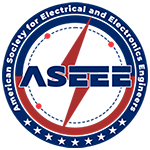Course Overview
This professional development course is designed for engineers and technicians who need practical skills and knowledge in substation design.
Program Details
Depending on the functions performed by a substation, the configuration and complexity can be quite varied. The skill of the designer is to anticipate the present and future needs that the substation will cater to, select appropriate design configuration, and calculate the ratings of main equipment such as busbars, transformers, and switchgear to ensure trouble-free service over several decades.
Sufficient thought should be given to the need for maintaining critical substation equipment, and appropriate redundancies must be planned as well. This is essential as otherwise the consumers fed by the substation can suffer frequent supply outages, which is undesirable from both a service and a financial point of view.
It is also necessary to ensure that the substation will work satisfactorily under various normal and not-so-normal situations (such as short circuits and other types of abnormal events that can occur in a system) without any failures. This is done through various calculations that are performed to reflect a set of simulated conditions. These calculations are collectively called as system studies. The type of studies will depend upon the complexity and criticality of the substation and the loads connected to it. The simulations are carried out using specialized computer software.
A designer should have a clear understanding of the studies that need to be performed in a given case and should also be able to decide the conditions that need to be simulated for each study. System studies can often bring out problem areas in the design. These need to be addressed by appropriate solutions involving equipment for voltage improvement, fault limiters, and flicker compensation.
Modern industries give rise to sizeable harmonic components, which can result in premature equipment failures by heating and or harmonic resonance. Harmonic filters and other measures to inhibit resonance will have to be planned in such cases.
These studies, when performed at the design stage, permit the designer to include the required corrective equipment proactively and integrate them with the rest of the system by providing proper space and switchgear as a part of the substation design, rather than as an afterthought.
This practical course will cover these complex issues through a simple step-by-step approach and real-life examples. At each step, you will undertake a basic design approach and perform calculations to ensure you get practical skills that can be immediately implemented in the workplace.
Course Benefits
- Receive a Certificate of Completion from ASEEE.
- Learn from well-known faculty and industry experts from around the globe.
- Flexibility of attending anytime from anywhere, even when you are working full-time.
- Interact with industry experts during the webinars and get the latest updates/announcements on the subject.
- Experience a global learning with students from various backgrounds and experience which is a great networking opportunity.
- Gain practical skills and knowledge essential for substation design.
- Study fundamental topics in substation design like capacity calculations, configuration selection, planning, lay out and much more.
- Learn about electrical network, system studies, harmonic control and MV substations.
- This course is full of examples and case studies to develop a deep understanding on the subjects.


